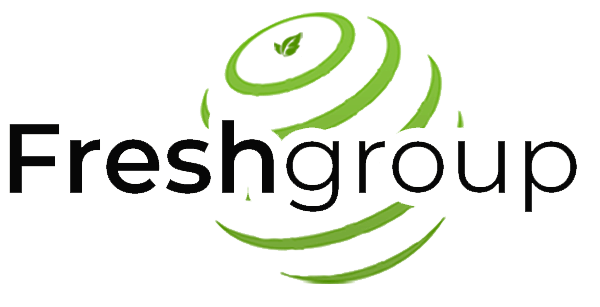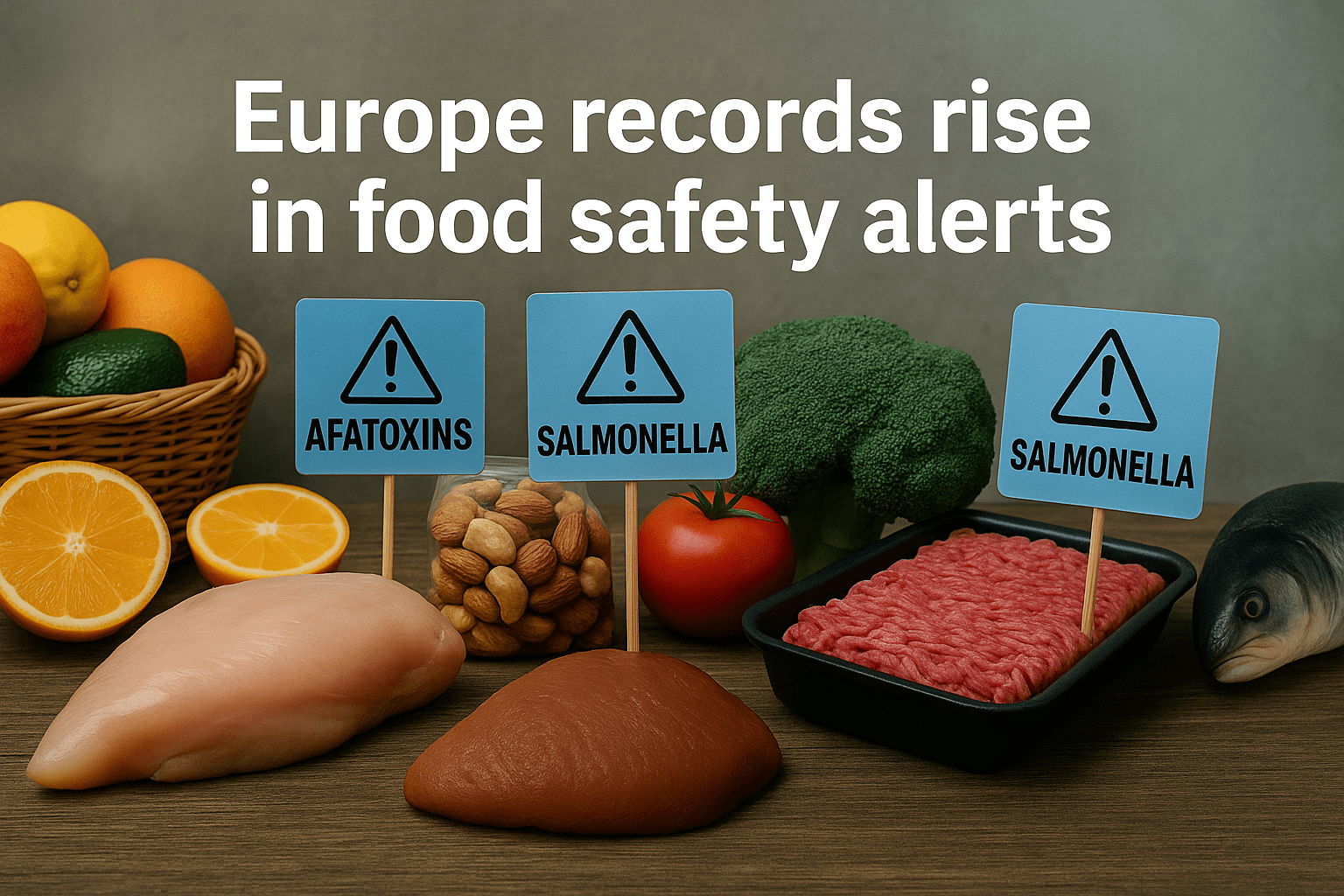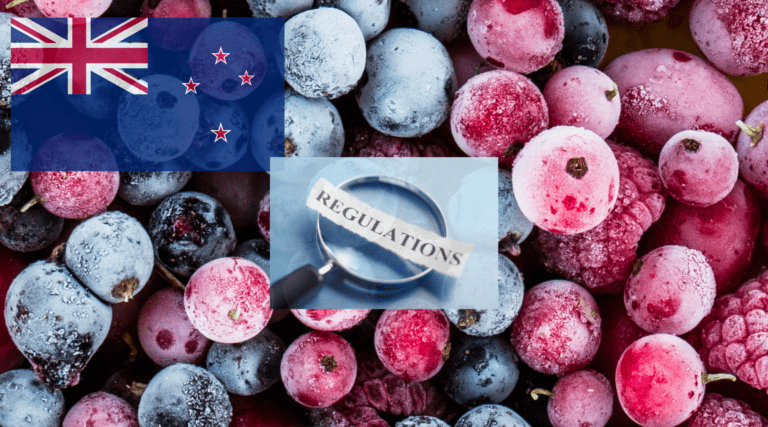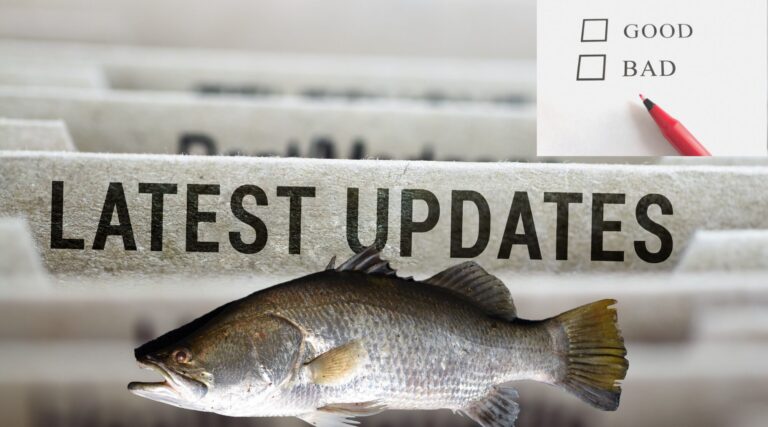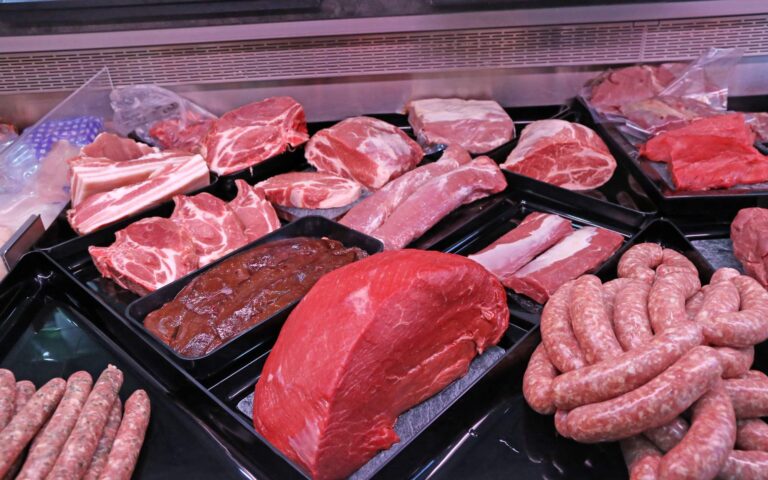Food safety alerts across Europe increased in 2024, signaling both rising challenges and stronger oversight among EU member states.
According to the European Commission, 9,460 notifications were issued through the Alert and Cooperation Network (ACN), marking an 8% rise compared to 2023. The ACN includes the Rapid Alert System for Food and Feed (RASFF) and the Administrative Assistance and Cooperation (AAC) networks.
RASFF alerts rose by 12% to 5,250 notifications, while AAC notifications remained steady. Of the total alerts, nearly 550 involved suspected cases of food fraud. Consistent with previous years, about one-third of RASFF notifications were border rejections—mostly due to pesticide residues found in imported fruits and vegetables.
“Despite a year full of challenges, 2024 marked significant progress in food safety,” said Sandra Gallina, Director-General for Health and Food Safety (DG SANTE). “The increase in RASFF notifications reflects the EU’s strong commitment to food and feed safety and the vigilance of our control authorities.”
Key Trends in Food Safety Alerts
- Fruits, Vegetables, and Pesticide Concerns
Fruits and vegetables made up the largest category, accounting for 16% of all alerts. Common hazards included:
- Pesticide residues (notably chlorpyrifos, acetamiprid, and dimethoate)
- Mycotoxins
- Pathogenic microorganisms
- Heavy metals and environmental contaminants
A significant 84% of these notifications were linked to products from outside the EU. Turkey remained the most frequently cited country of origin, followed by Egypt, India, and China.
- Nuts and Seeds: Aflatoxins and Salmonella
Nuts and nut products were behind 7% of the alerts. Groundnuts (peanuts) were most often reported due to aflatoxin contamination. Pistachios were also frequently flagged for mycotoxins.
Sesame seeds accounted for 20% of nut-related notifications, with recurring problems like:
- Salmonella contamination
- Missing health certificates
These products were mainly sourced from Turkey, Egypt, and the United States.
- Meat and Poultry: Microbial Hazards Persist
Meat and meat products, including poultry, represented 10% of all notifications. Almost half were due to microbiological hazards:
- Salmonella in poultry, minced beef, pork sausages, and game meat
- Shiga toxin-producing E. coli (STEC) and Listeria monocytogenes in beef and pork
- Campylobacter in poultry
Poland and Brazil were the most commonly cited countries of origin, often due to hygiene-related issues.
- Supplements and Fortified Foods: Microbial and Mold Risks
Dietetic foods, supplements, and fortified foods made up 7% of the total alerts. Key risks included:
- Cronobacter sakazakii and Salmonella contamination
- High mold counts in products like aloe juice and spirulina, pointing to poor hygiene during production
China was frequently identified as a supplier of raw ingredients, while the U.S. led in finished products—many of which contained unauthorized substances under EU rules.
- Bakery, Dairy, and Other Products
- Cereals and bakery goods: 6% of notifications
- Herbs and spices: 4%
- Fats and oils: 3%
Milk and dairy products were involved in 3% of alerts. A notable case involved Yersinia enterocolitica in raw goat’s milk cheese from France. Initially detected aboard a U.S. cruise ship, the outbreak was traced to distribution in 30 countries, causing 181 illnesses across France, Belgium, Norway, and Luxembourg.
- Fish and Seafood: Contaminants and Cold Chain Failures
Fish and seafood products accounted for 4% of notifications, with common issues including:
- Microbial contamination
- High levels of heavy metals (mercury, arsenic, cadmium)
- Temperature abuse during transport, often due to cold chain failures
Tuna was particularly affected by histamine buildup and unauthorized additives (e.g., carbon monoxide, ascorbic acid above legal limits). Listeria contamination was mainly reported in salmon.
Source: FSN
Reach out to Fresh Group Food Safety And Quality Consulting for any inquiries related to food quality and safety.
